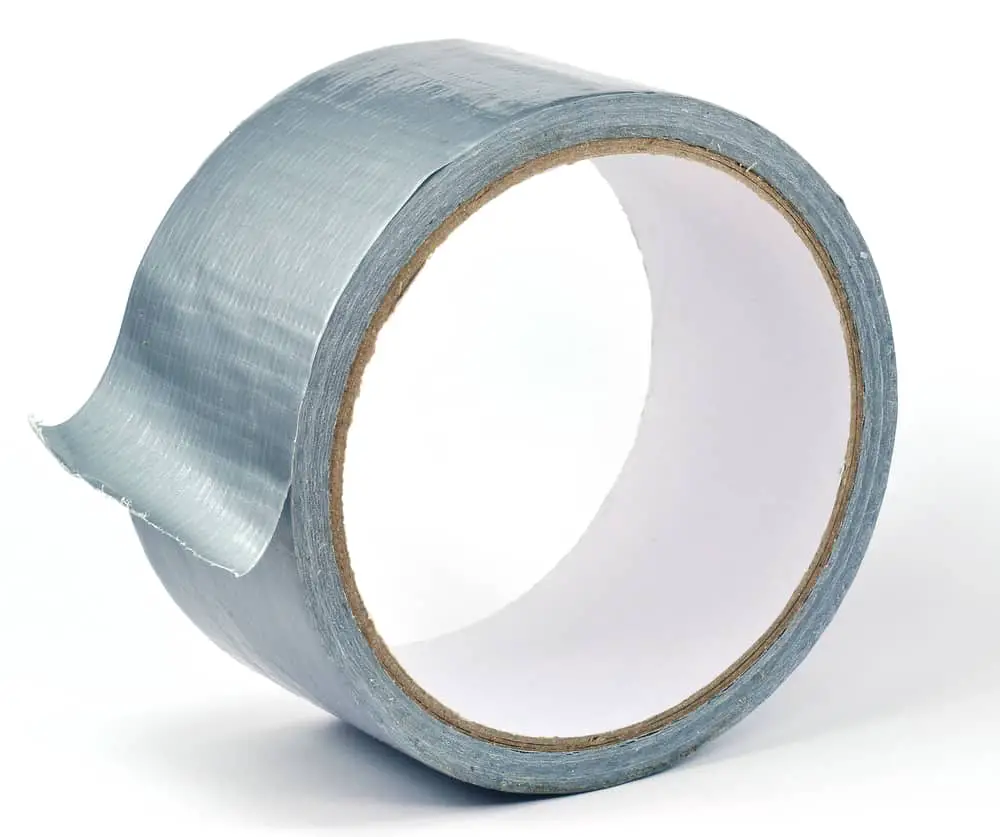There are very many products that live to serve their real names.
However, duct tape is not among such items.
It is a useful sticky substance that serves many functions in DIY and home repair projects, but its usefulness does not apply to ducts.
Say, duct tape is a misnomer and cannot be used to do anything of significance on actual ducts.
(In this regard) Should You Ever Cover A Heat Vent With Duct Tape?
SHORT ANSWER – NO – DON’T IT. Duct tape is too weak to withstand heat. There are other most appropriate ways to cover heat vents but remember, there are better ideas than covering vents at the endpoints.
This post covers the dangers of closing heat vents and other options to cover leakages along vent ducts.
Four Reasons You Should Never Cover Heat Vents
Covering air vents, whether circulating hot or cold air in the house, is a big waste of resources.
Air vents are meant to be open, and if you notice some furniture blocking them, it is important that you move them. Here is why heat/air vents should not be covered.
1. Bad Airflow
Your HVAC system doesn’t know when a vent is covered. It will just keep functioning by pushing air through the vents.
With time pressure will build up in the end pipes, and insufficient airflow turns out to be the result.
Allow the vents to do their work and avoid suffocating yourself with inadequate air.
Closing vents could even damage your HVAC system.
2. Cracks
Low airflow is always a problem for the heating system.
When you close the vents, and a lot of pressure is exerted on the cent cover, it will likely cause problems like cracks and, worse, the production of carbon monoxide, which is harmful to human health.
3. Mold And Mildew
If you live in a highly humid state, covering vents will lead to the formation of molds and mildew.
This results from the air that settles on the cover and later condenses.
The mildew and mold could also likely develop along the vent ducts, and this may cause blockages.
4. It Wastes Energy
You might have thought that covering the vents would save significant energy.
Unfortunately, it does the reverse opposite.
The pressure created may lead to cracks, and some air will escape from these cracks.
To add on, due to poor air circulation, the HVAC will work extra hard, and this will mean more energy consumption.
Why You SHOULD NEVER Use Duct Tape On Ducts
Duct tape becomes handy when you want to fix busted broom handles and patches and keep cardboard boxes firmly closed.
This strong adhesive should, however, not be used on ducts, as its name suggests. Save it for other adhesive works where it will perform best.
Avoid using duct tape when finding a substance to seal your vents on the cracks and leakages.
Ideally, duct tape is quite strong, but it has no capability to withstand heat. A good sealant should be able to withstand extreme changes.
Some time back, scientists tested 19 sealants made of a different material. Duct tape was among these 19 sealants.
The main aim was to perform an accelerated aging test and determine if they could withstand extreme temperatures.
In the process, they alternated between 54-degree cool air and 167-degree heated air. This was changed every five minutes for three consecutive months.
The idea was to mimic the great temperature changes experienced in summer and winter.
Of all the sealants tested, duct tape failed to withstand the conditions.
Hot temperatures degraded its adhesive, making it fail after a few days.
This proves that using duct tape to cover leakages or vents will get damaged once exposed to hot air.
Using Duct Tape Could Cost You More Money
The main purpose of sealing ducts is to cut back on the losses caused by unseen leakages along the duct.
These leakages significantly raise energy bills.
Now, if you opt to use duct tape, the adhesive will only last for a few days. When heat destroys the duct tape adhesive, leakages will continue as before or even worse.
The other main problem with using duct tape is that it violates local codes.
According to the International Energy Conservation Code, any tape used on ducts must have a label of Underwriters Laboratory (UL).
This labeling does not guarantee that they will work best. It implies flame resistance, which is key for local code compliance.
The Three Duct Sealing Products
Here are some of the products you can use to seal ducts and stay comfortable, knowing they won’t be affected by heat.
1. Red Devil


This material is applied with a paintbrush or a simple putty knife to cover small duct gaps.
If the gaps are large, or when working on duct joints, start by covering the spaces with fiberglass mesh tape and then paint with Red Devil.
2. Injected Aerosol Sealant


This is an aerosol sealant made of a sticky vinyl polymer.
It is pumped through the ducts and automatically seeks leaks that span on the holes and dries there, permanently sealing the leakages.
The sealant is confirmed to work effectively for over two years before it is replaced.
3. Foil-Backed Tape


It is used to cover heat duct gaps. It uses acrylic and butyl adhesive in large amounts to resist drying out.
It has a metal foil backing that helps withstand extreme temperature fluctuations without loosening or shrinking the adhesive.
With this foil-backed tape, you can excellently seal the ducts without a mess.
Conclusion
Duct tape works as a good sealant on most simple projects.
However, it cannot be used on ducts, especially those that pass through heated air.
Consider other options for sealing spaces along the duct and avoid covering heat vents to maintain your HVAC system. It will also help in saving energy.

